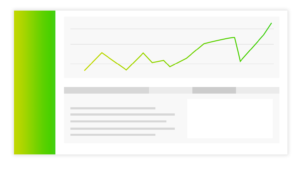How to Develop Your Customer Data Strategy

In the worthy and important pursuit of understanding your customer, it can be tempting to collect more, more, and more data. However, if you can gather data from every channel and every touchpoint, should you?
Not necessarily.
The important thing is to gather the right data, which in many cases means your own first-party data.
The array of possible data points available to marketers is so vast that it can be hard to discern which pieces of information are more important than others. Here are some ways that can help you focus on the right types of data to achieve your marketing goals.
What qualifies as the right data depends on what you are trying to accomplish.
Here’s how to make a plan to get what you need.
Reporting on too much data is overwhelming and can bury the insights you need.
Home in on the specific types of data points that actually indicate success for your brand. Whether you are measuring brand lift, conversion rates, or sales, build your data framework around your key performance indicators (KPIs) and focus on those.
Many brands are already harnessing data from key channels, such as web, mobile, email, and ads. This is a great start, but don’t forget the valuable offline data that exists in your CRM, point-of-sale system and call center.

These kinds of data types exist in silos, so you need a plan for merging this fragmented information across all of the channels where you interact with customers.
Make sure that you have the ability to recognize and understand customers at every touchpoint, across channels and devices, enabled by the right identity resolution technology.
When you look at all of your channels with a holistic view, you are able to see how the performance of each individual channel impacts the ultimate customer outcome. Create deep, rich cross-channel profiles in order to fuel your personalization and targeting efforts.
If you are capturing live intent data, then you are at a great advantage. The window of opportunity between the moment a customer signals intent and when they click ‘buy’ is brief — so make sure you capture this data and activate on these clear and valuable touchpoints.
Creating personalized experiences that align with what consumers are looking for in real-time is a marketer’s most powerful weapon for increasing engagement and improving the path-to-purchase dynamic.
When you leverage what you know about your customer’s behavior and attributes, then you are able to create dynamic activation use cases that personalize the customer experience.

First, start by configuring the behaviors and attributes that are most relevant to your products. Once you feel comfortable with the basics, you can get as specific as you’d like as you build your system to automatically deliver the right message in the right place at the right time.
Getting more value out of your data begins by establishing your marketing goals.
These goals will guide you as you choose the types of data you need to harness and leverage. As your goals shift and ambitiously grow, update your data strategy to reflect these new priorities.
Want to learn more?
California Consumer Privacy Act (CCPA): What You Need To Know
CDP vs. DMP: What Are They & Do I Need One?
How to Leverage Customer Data for Successful Paid Media Campaigns
